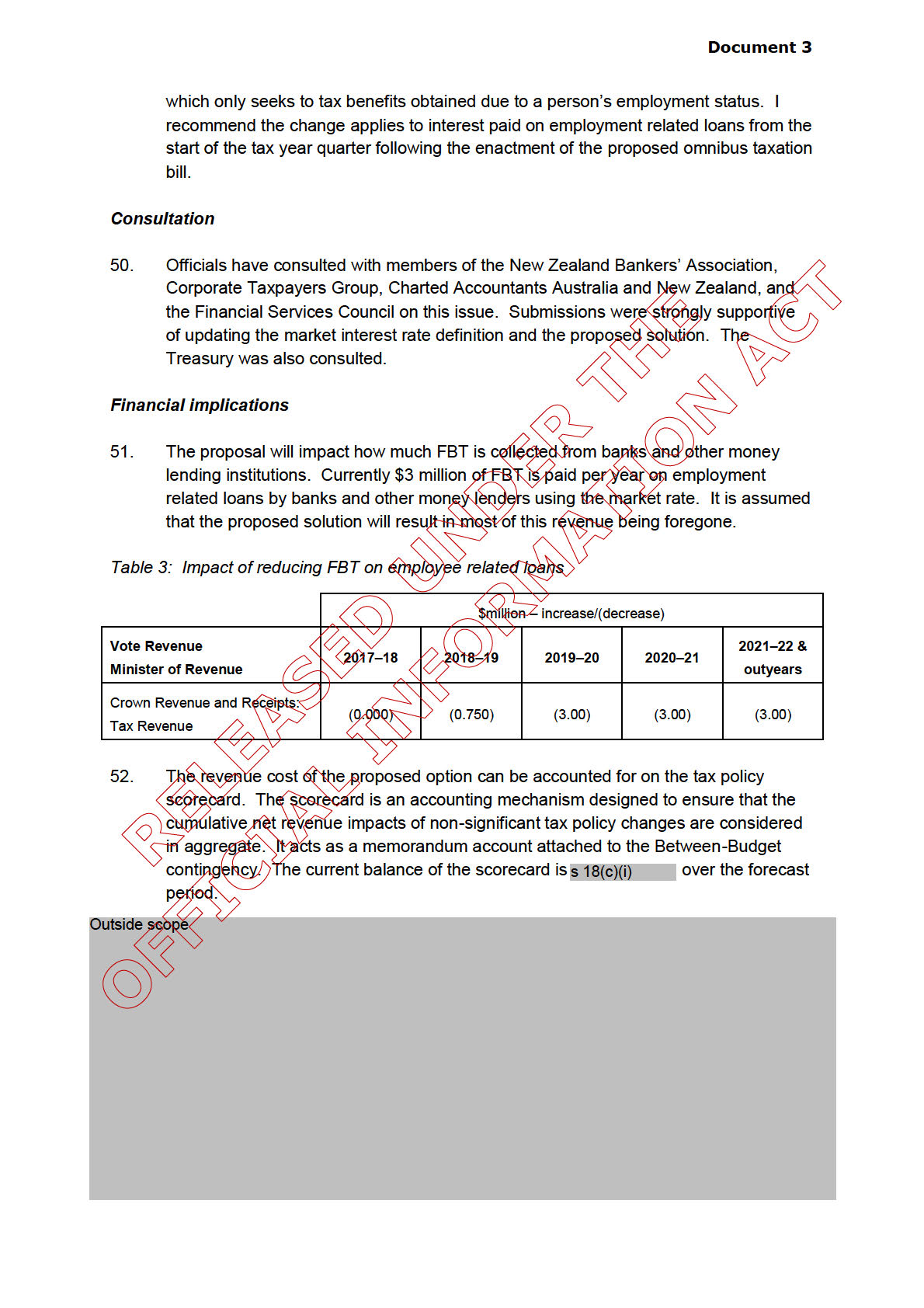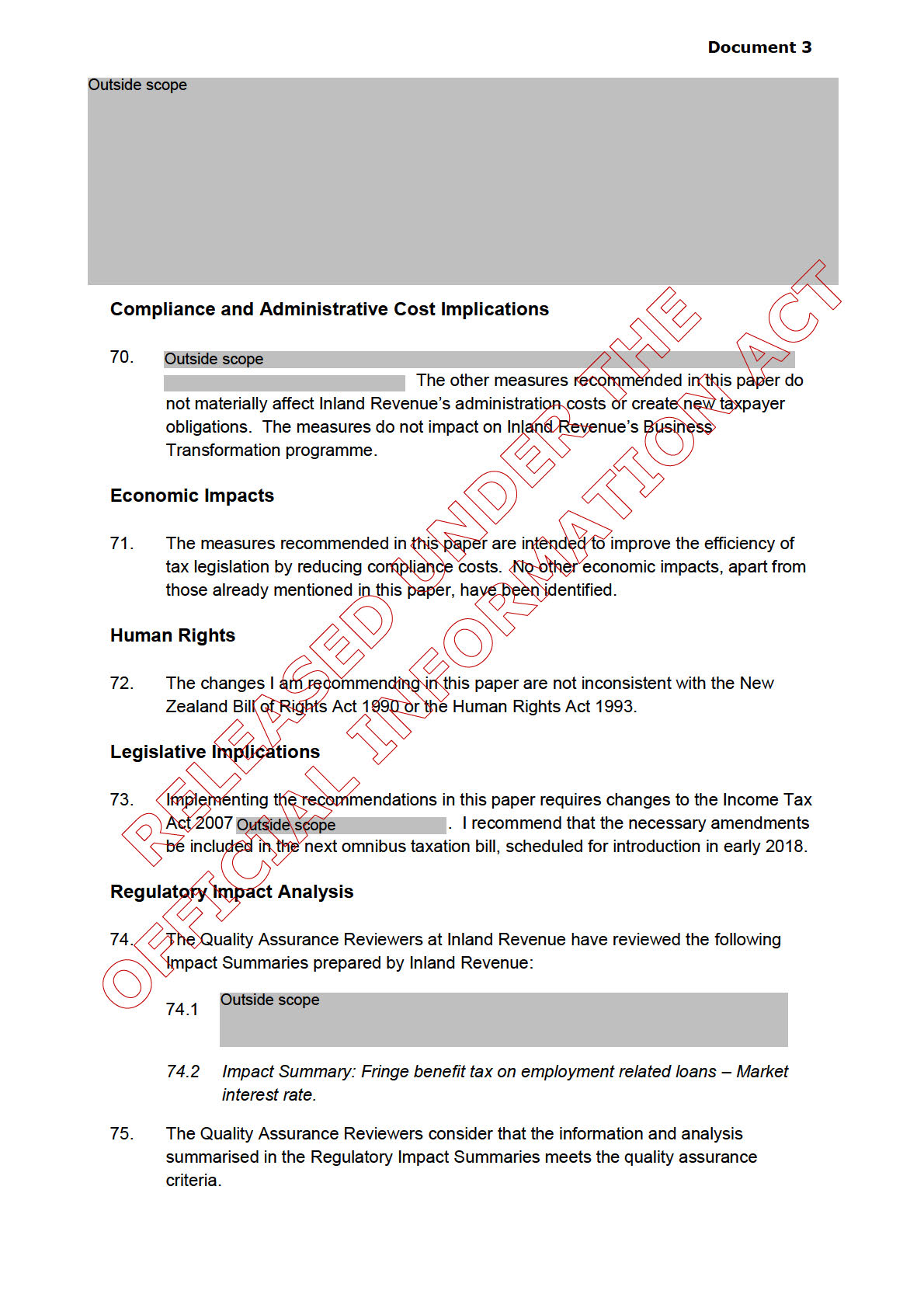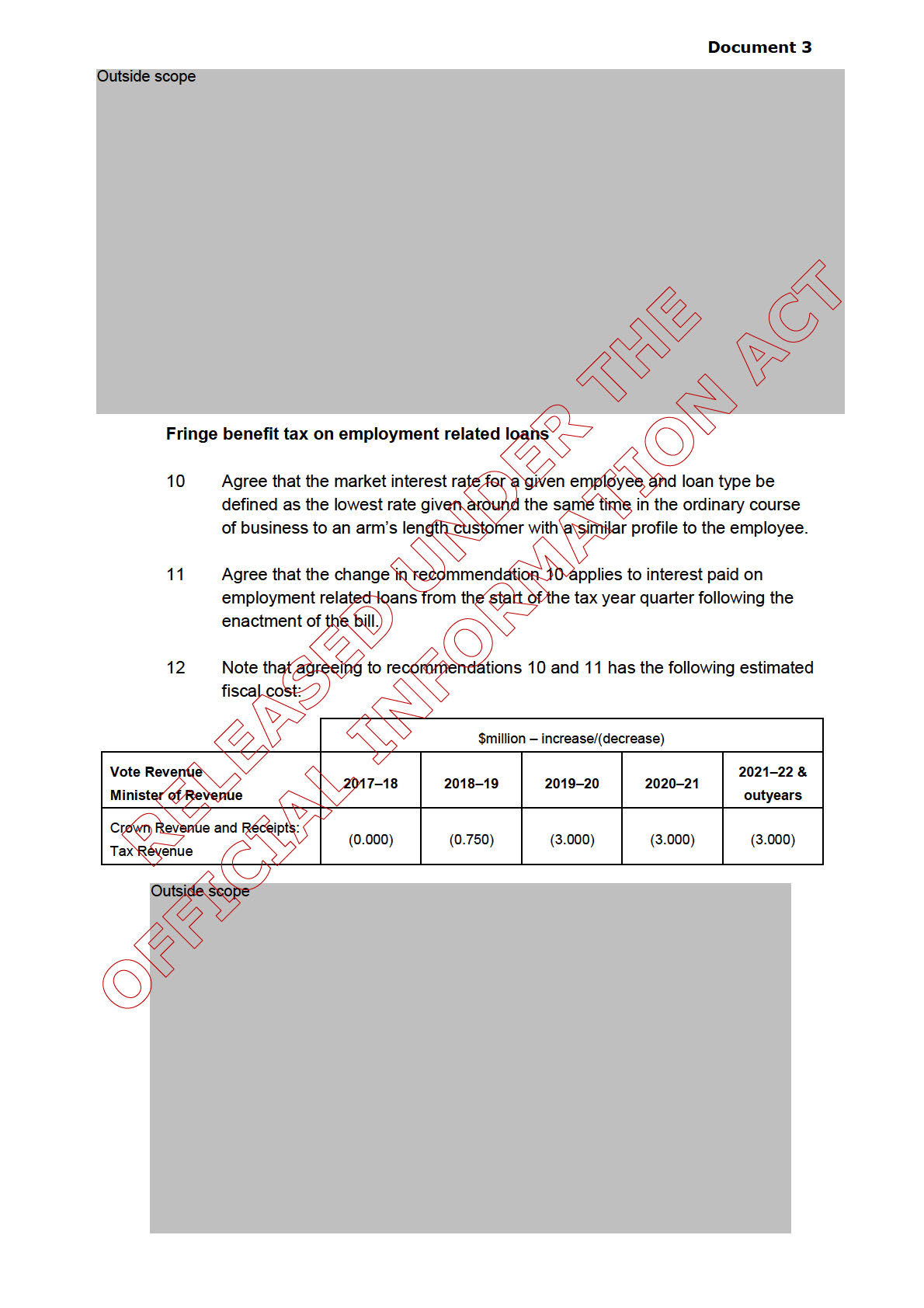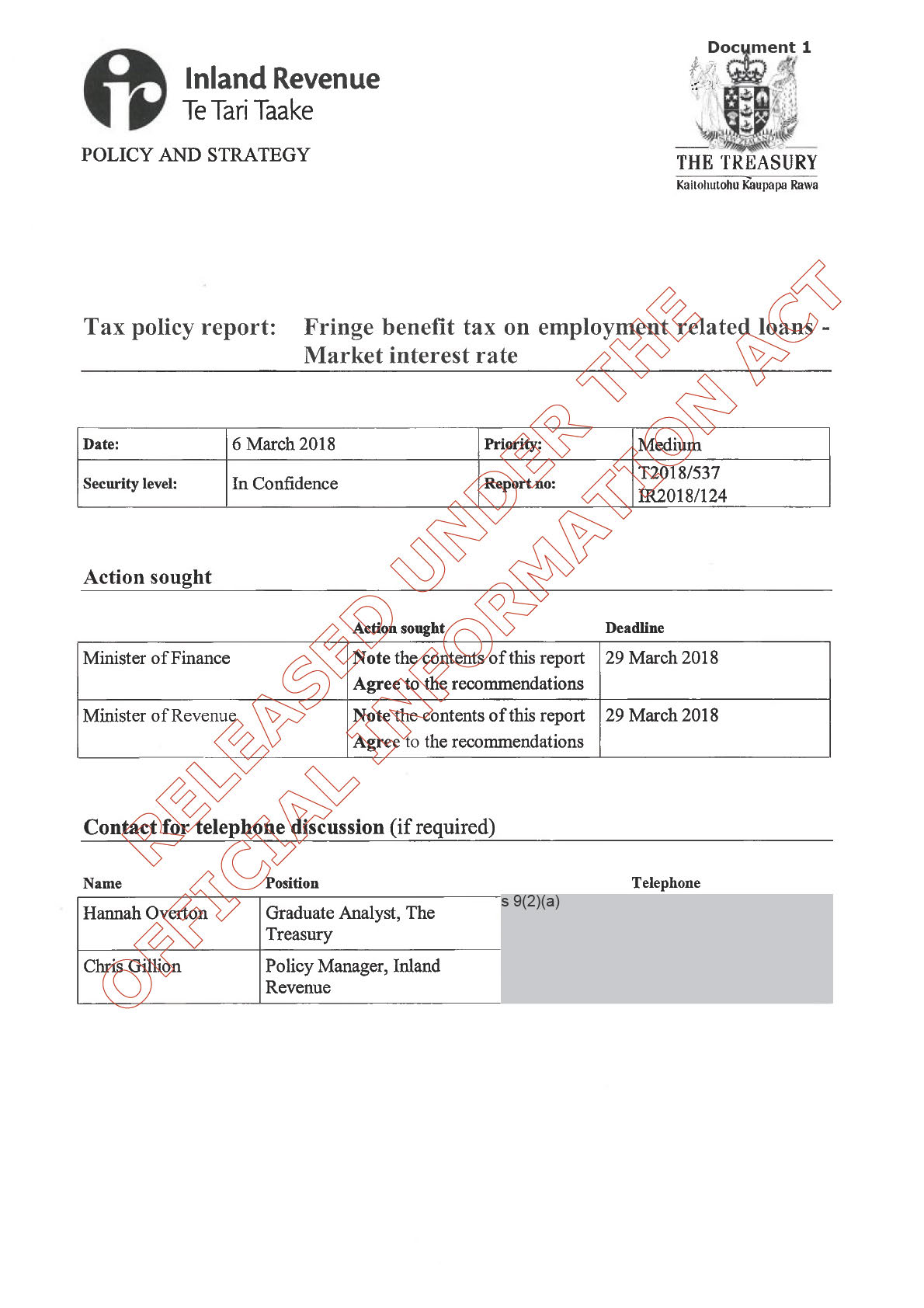

 Document 1
Recommended Action
Document 1
Recommended Action
We recommend that you:
(a)
Note that the legislative definition of the market interest rate for calculating fringe benefit
tax on employment related loans provided by banks and other money lenders is outdated and does
not reflect the true market rate.
Noted
Noted
(b)
Agree that the market interest rate for a given employee and loan type should be defined as
the low
est rate given around the same time in the ordinary course of business to an arm’s length
customer with a similar profile to the employee.
Agreed/Not Agreed
Agreed/Not Agreed
(c)
Note that the proposed option in (b) has an estimated revenue cost of $3 million per year,
which can be accounted for on the tax policy scorecard.
Noted
Noted
EITHER
(d)
If Ministers wish to include the proposed option in the first omnibus taxation bill of 2018
they should
authorise for lodgement the finalised Cabinet paper with the Cabinet Office by 29
March for discussion at the 4 April Cabinet Economic Development Committee.
Authorised for lodgement/Not authorised
Authorised for lodgement/Not authorised
OR
(e)
Agree to consider this issue as part of a wider discussion on the tax policy work
programme.
Agreed/Not Agreed
Agreed/Not Agreed
Matt Cowan
Chris Gillion
Team Leader
Policy Manager
Tax Strategy
Policy and Strategy
The Treasury
Inland Revenue
Hon Grant Robertson
Hon Stuart Nash
Minister of Finance
Minister of Revenue
/ /2018
/ /2018
Page 2
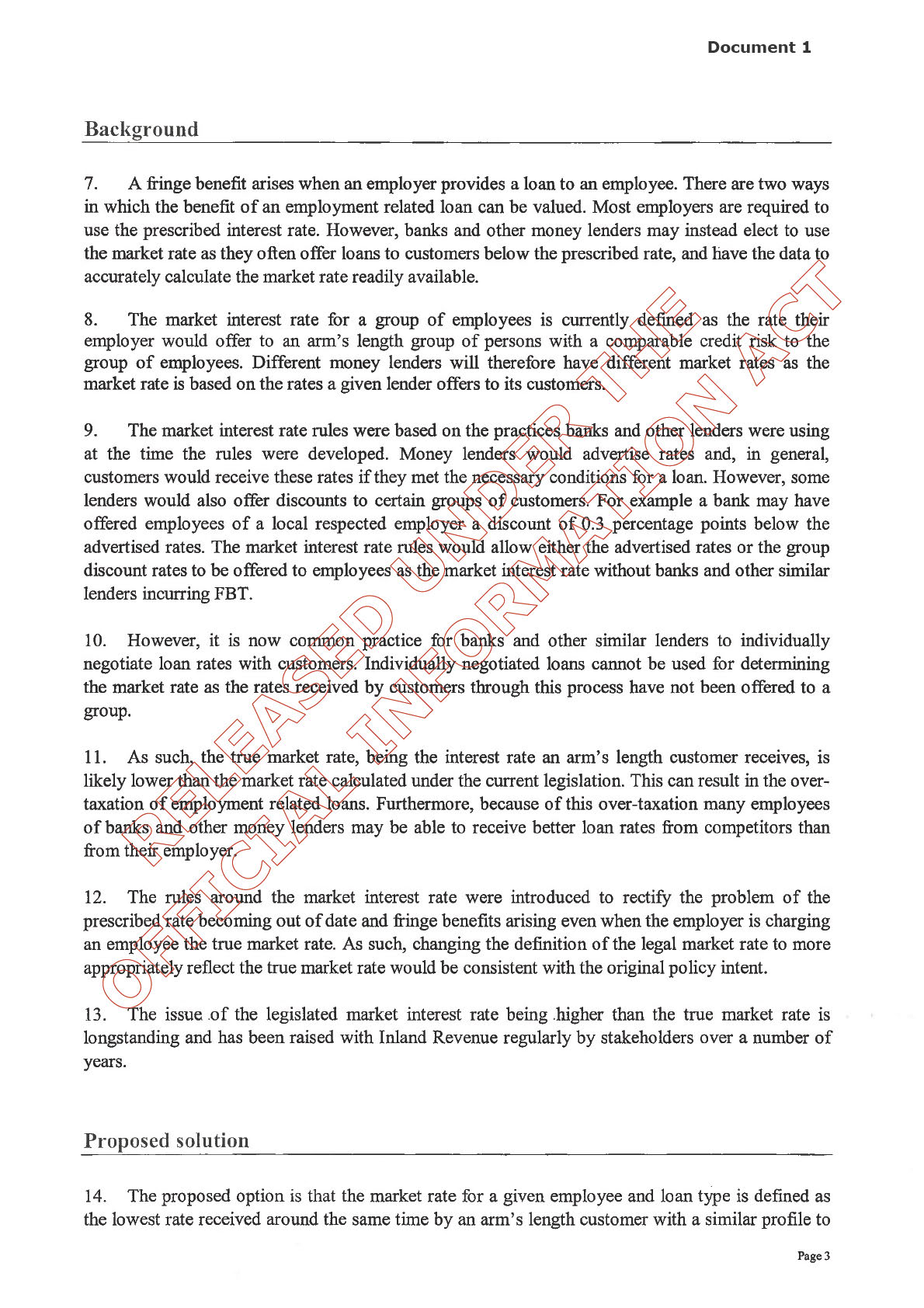



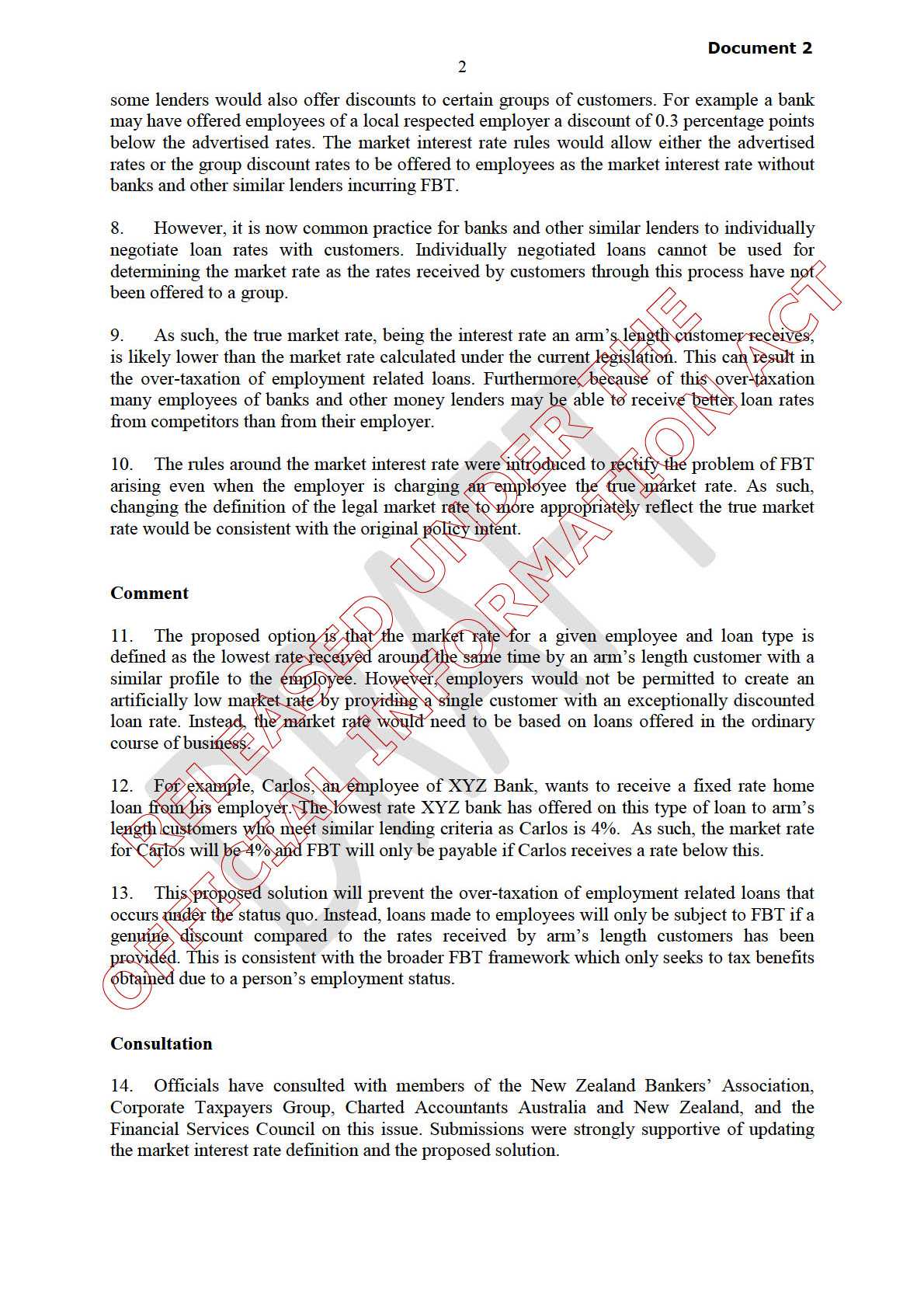
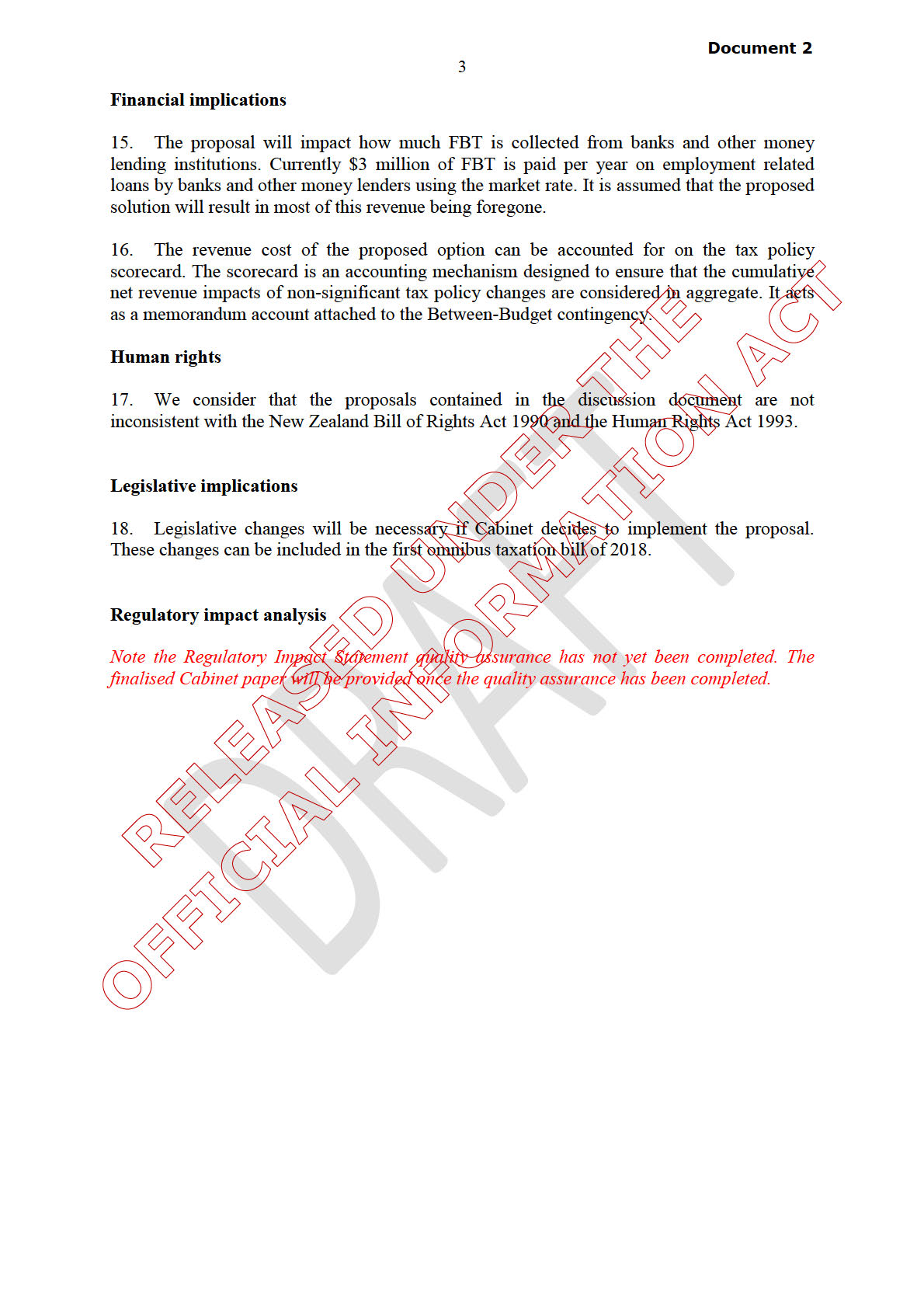

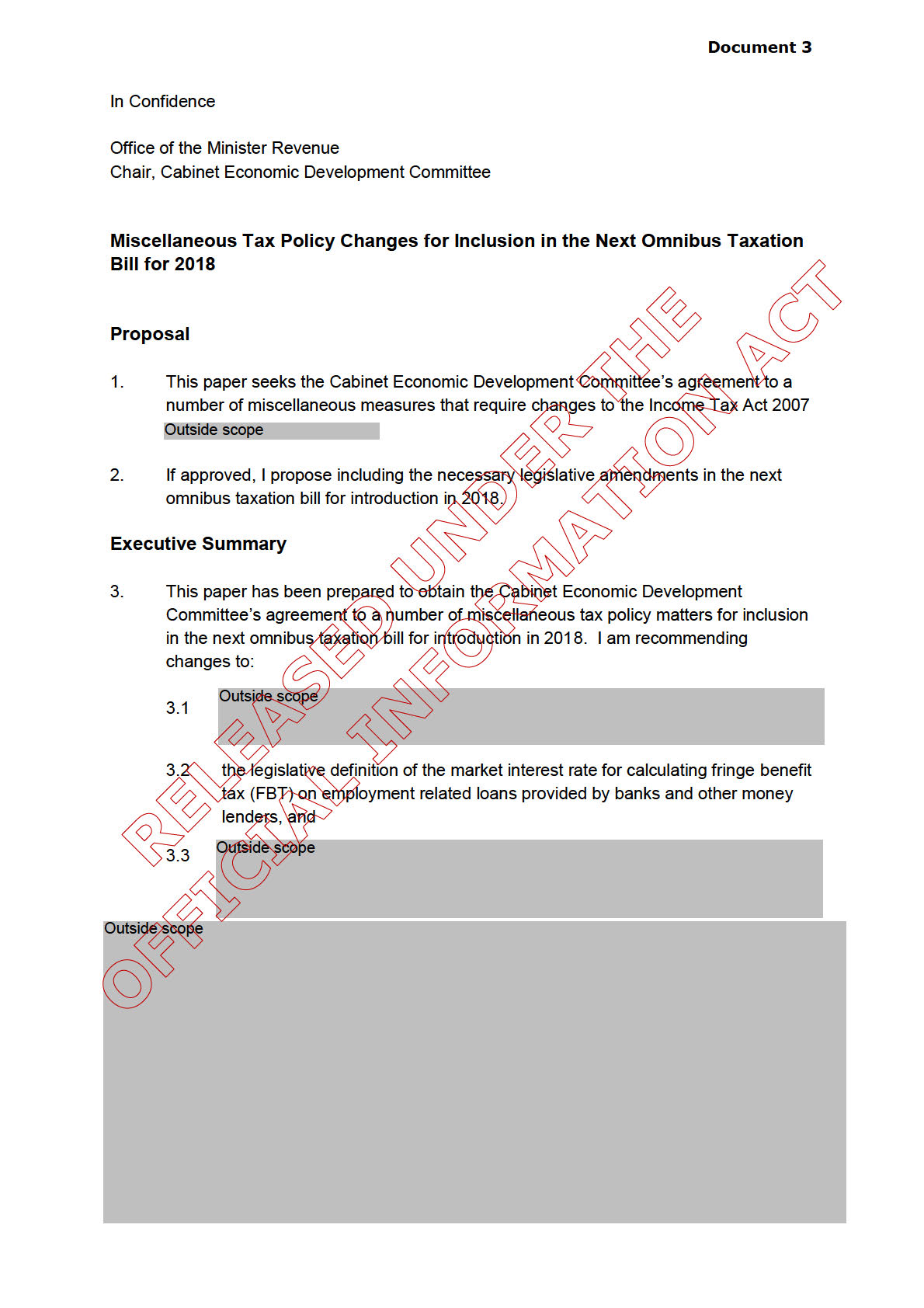
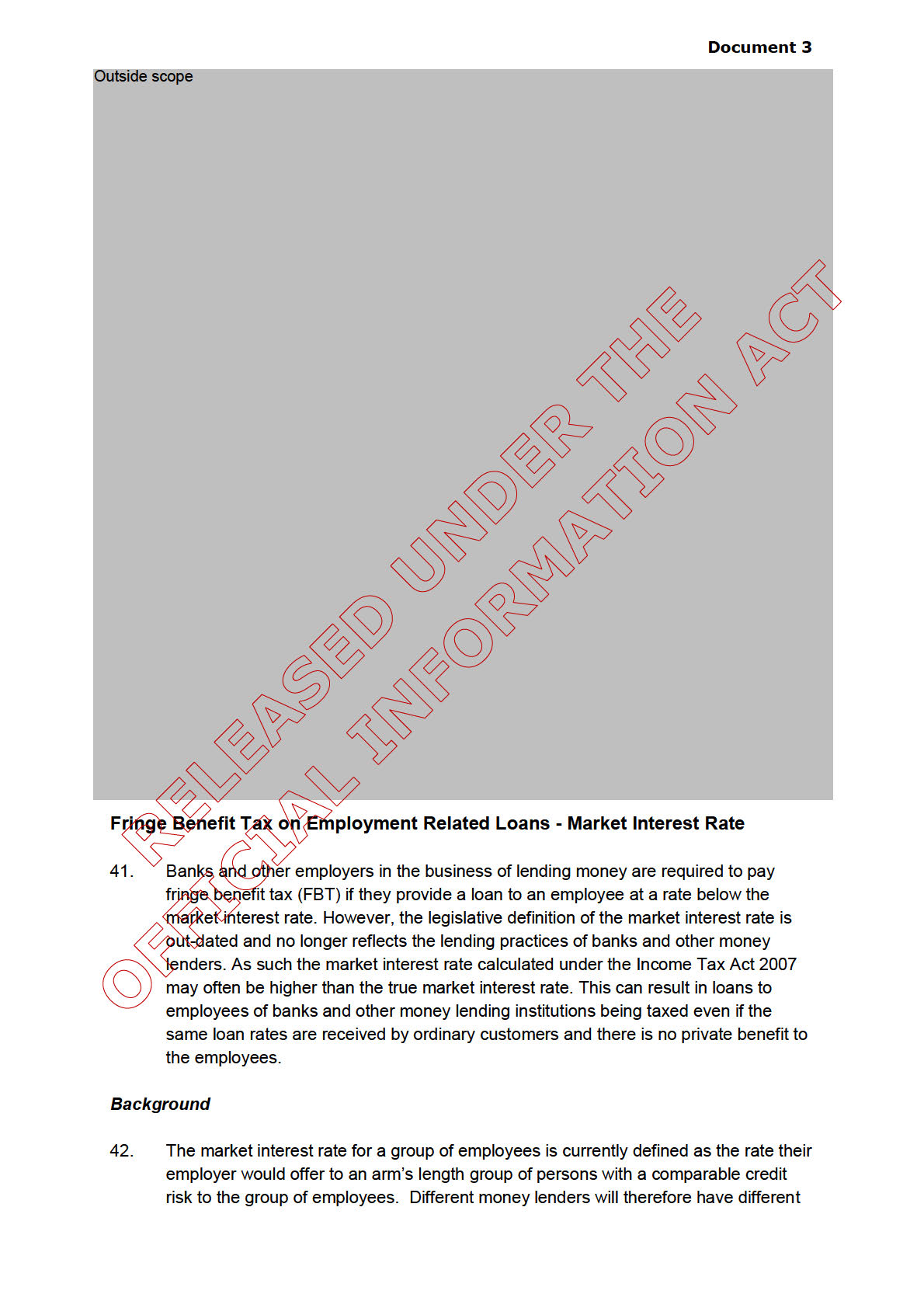
 Document 3
Document 3
market rates as the market rate is based on the rates a given lender offers to its
customers.
43.
The market interest rate definition was based on the practices banks and other
lenders used at the time the rules were developed. Money lenders would advertise
rates and in general customers would receive these rates if they met the necessary
conditions for a loan. However, some lenders would also offer discounts to certain
groups of customers. For example a bank may have offered employees of a local
respected employer a discount of 0.3 percentage points below the advertised rates.
The market interest rate rules would allow either the advertised rates or the group
discount rates to be offered to employees as the market interest rate without banks
and other similar lenders incurring FBT.
44.
However, it is now common practice for banks and other similar lenders to individually
negotiate loan rates with customers. Individually negotiated loans cannot be used for
determining the market rate as the rates received by customers through this process
have not been offered to a group.
45.
As such, the true market rate, being the interest rate an arm’s length customer
receives, is likely lower than the market rate calculated under the current legislation.
This can result in the over-taxation of employment related loans. Furthermore,
because of this over-taxation many employees of banks and other money lenders
may be able to receive better loan rates from competitors than from their employer.
46.
The rules around the market interest rate were introduced to rectify the problem of
FBT arising even when the employer is charging an employee the true market rate.
As such, changing the definition of the legal market rate to more appropriately reflect
the true market rate would be consistent with the original policy intent.
Comment
47.
I recommend the market rate for a given employee and loan type should be defined
as the lowest rate received around the same time by an arm’s length customer with a
similar profile to the employee. Employers would not, however, be permitted to
create an artificially low market rate by providing a single customer with an
exceptionally discounted loan rate. Instead, the market rate would need to be based
on loans offered in the ordinary course of business.
48.
For example, Carlos, an employee of XYZ Bank, wants to receive a fixed rate home
loan from his employer. The lowest rate XYZ bank has offered on this type of loan to
arm’s length customers who meet similar lending criteria as Carlos is 4%. As such,
the market rate for Carlos will be 4% and FBT will only be payable if Carlos receives
a rate below this.
49.
This proposed solution will prevent the over-taxation of employment related loans that
occurs under the status quo. Instead, loans made to employees will only be subject
to FBT if a genuine discount compared to the rates received by arm’s length
customers has been provided. This is consistent with the broader FBT framework
